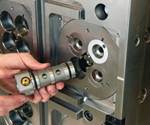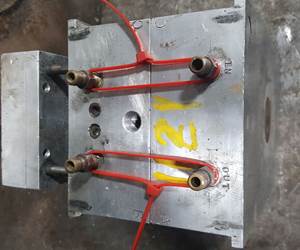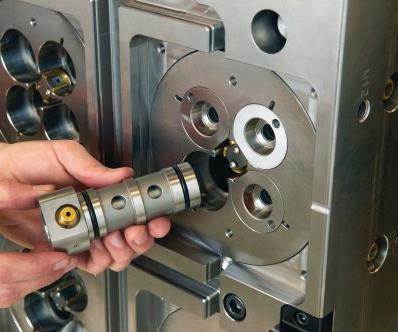In the Trenches: Out of the Mouths of Babes
When it comes to mold repair, how do you know when you’re just fighting fires, performing controlled firefighting or completing true corrective action?
Well not exactly, I mean he wasn’t a babe. Perhaps there’s a better phrase, something short of a full-blown epiphany that expresses the moment of eureka I experienced when he said it. Although the precise word eludes me now, the stark clarity of the statement was seared into my memory instantly. The statement was profound, not in its depth, but in its simplicity. One of those things you hear and think “Duh, obviously, why didn’t I think of that?”
I don’t remember how it started or anything else we discussed during the conversation, but it obviously centered on the effectiveness of the tool repair department and therefore by default, the culture of the department. Were we being effective? Or were we just fighting fires? I’d often asked myself this question although in a more comfortable general query such as “How do you know when you’re just fighting fires?”
Scenario Breakdown
I know by now you’re saying to yourself “Just tell me what he said” (but being the sadist that I am, I’m not going to; not yet anyway.) Allow me to set up three scenarios for you to consider.
1. First a shop where one of the most recurring repairs was water leaks. The shop was full of tools that had baffles from the mold base into the back side of the core and cavity inserts with o-ring seals to keep them from leaking. Cheap and easy. Works fine for awhile then you eventually experience this annoying chemical reaction, which colloquially referred to as rust attacks and diminishes the integrity of the sealing surfaces.
“That’s nothin’. Just glob some silicone o-ring lube on it. It’ll hold.” Yeah, for a while, but chemistry doesn’t take a break and before long, “diminished” progresses to” degraded” and it’s leaking again.
“That’s okay, just put some clear RTV on it. That will stop it from leaking.” Right again—temporarily. But, true to form, chemistry never rests (even when the mold is resting) and now the o-ring counter bore has a texture-like the surface of the moon. “That’s no hill for a stepper, we’ll re-cut the counter bore and put in the next larger o-ring. Arrgh.” And so the cycle has been reset and starts again.
2. The mold has a unique pinch block design that is replaceable from the PL, which is pretty sweet considering that it breaks every few months and actually has to be replaced—at a cost of +/- $500 a pop! After event number four or five someone noticed that each time there was flash build-up at the face of the slide, it caused excess pressure, and hence component failure. Solution? Put it on a frequent cleaning schedule, say every 10k cycles. Guess what? Two spare pinch blocks have been sitting in the cabinet for more than two years! Woo hoo! We call it predictive maintenance and it works.
3. Dead material/cold slug. Dog-house lifters by the nature of their design slide along the back surface of the molded part and in the process miniscule shavings often stick to the lifter and then miraculously show up on the “A” surface of the subsequent shot. After fighting this problem on several new tools, we called in someone smarter, and to my chagrin, another “’Duh, obviously, why didn’t I think of that?’ moment” occurred.
The toolmaker re-fit the lifter about .005 below flush with the surrounding core surface. Consequently, as the lifter ejected and moved laterally, the leading edge moved into “air” as opposed to scooting along the back surface of the part. To this improved fit we also added a near mirror finish on the molding surfaces of the lifter (another learning opportunity offered by one of my betters), which further reduced material drag. Problem eliminated.
Scenario Analysis
1. Each time the tool was fixed—but never permanently—the root cause of rust was never addressed. This is fire-fighting.
2. The problem was identified and dealt with adequately. Meaning that costs were reduced and occurrences of unexpected downtime or unscheduled mold stops were eliminated. Again the root cause of flash build-up on the face of the slide was never dealt with. This is predictive maintenance (aka controlled fire fighting).
3. A predictable effect of improperly fit tooling was identified and corrected with the added benefit of improved surface finish as a little bit of insurance. This amounts to a true corrective action (i.e. effective tool repair).
The dictum? “If you’re not addressing root causes; you’re just fighting fires. Said by Curt Stout, Master Molder 2011—gotta give credit where credit is due.
Related Content
Hands-on Workshop Teaches Mold Maintenance Process
Intensive workshop teaches the process of mold maintenance to help put an end to the firefighting culture of many toolrooms.
Read MoreLaser Welding Versus Micro Welding
The latest battle in finely detailed restoration/repair of mold materials.
Read MoreWhat You Should Know About Injection Mold Safety Straps
Every mold should have one in order to be safe and OSHA compliant.
Read MoreThink Safety: Eliminate Hazards Throughout the Shop
The tooling community is taking advantage of new products for safer mold shops and molding facilities.
Read MoreRead Next
In the Trenches: Mold Repair
In this multi-part series of articles, contributer James Bourne, a tool repair supervisor and freelance writer, shares his own personal struggles in the business, as well as lessons learned and tricks of the trade garnered along the way.
Read MoreHow to Use Continuing Education to Remain Competitive in Moldmaking
Continued training helps moldmakers make tooling decisions and properly use the latest cutting tool to efficiently machine high-quality molds.
Read MoreHow to Use Strategic Planning Tools, Data to Manage the Human Side of Business
Q&A with Marion Wells, MMT EAB member and founder of Human Asset Management.
Read More

















